Japan Tradition: Akita Kantō
The Akita Kantō (秋田竿燈まつり) is the Akita city festival. It is celebrated from 3 to 7 August with the aim of praying for a good harvest. This festival is very special, and to participate there is a need for special skills.
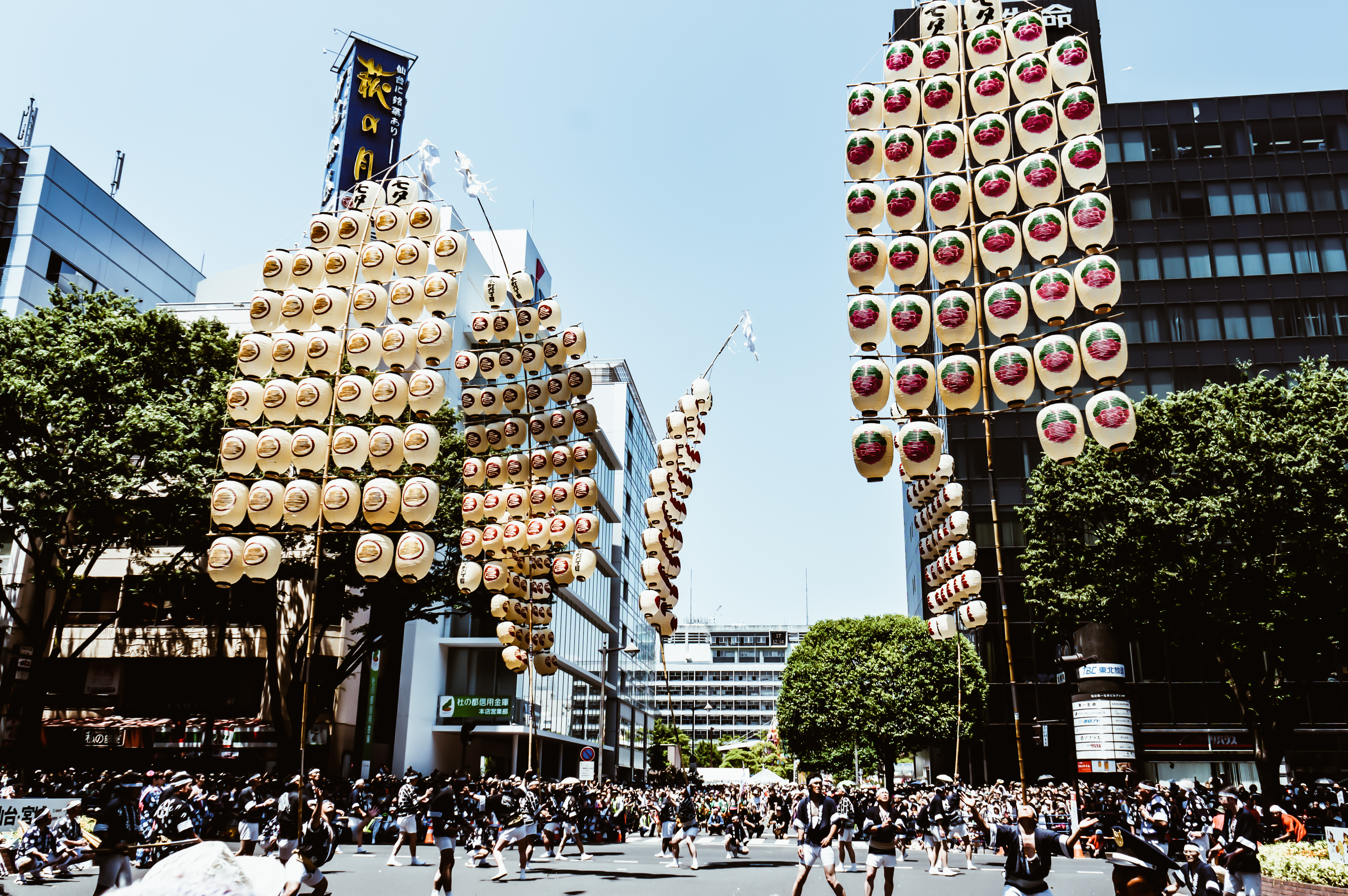
photo credits: Zamboni.
The peculiarity of the Akita Kantō
If you have never had the chance to attend this particular matsuri, surely today you will be surprised. In fact, the festivities consist of taking bamboo poles around the city by night. And so far it could even be simple, except that these poles have a length that varies from five to twelve meters. Furthermore, on top of these, there are twenty-four or twenty-six lanterns with gohei (wooden sticks) attached. The total weight of these poles can reach 50 kilos. They are transported through the city streets on the palms, foreheads, shoulders or backs of the participants.
The Akita Kantō is one of the main festivals in the Tōhoku region together with the Tanabata, the Aomori Nebuta Matsuri and the Hanagasa Matsuri. In fact, in 1980 it was defined as an important and intact property of folk culture.
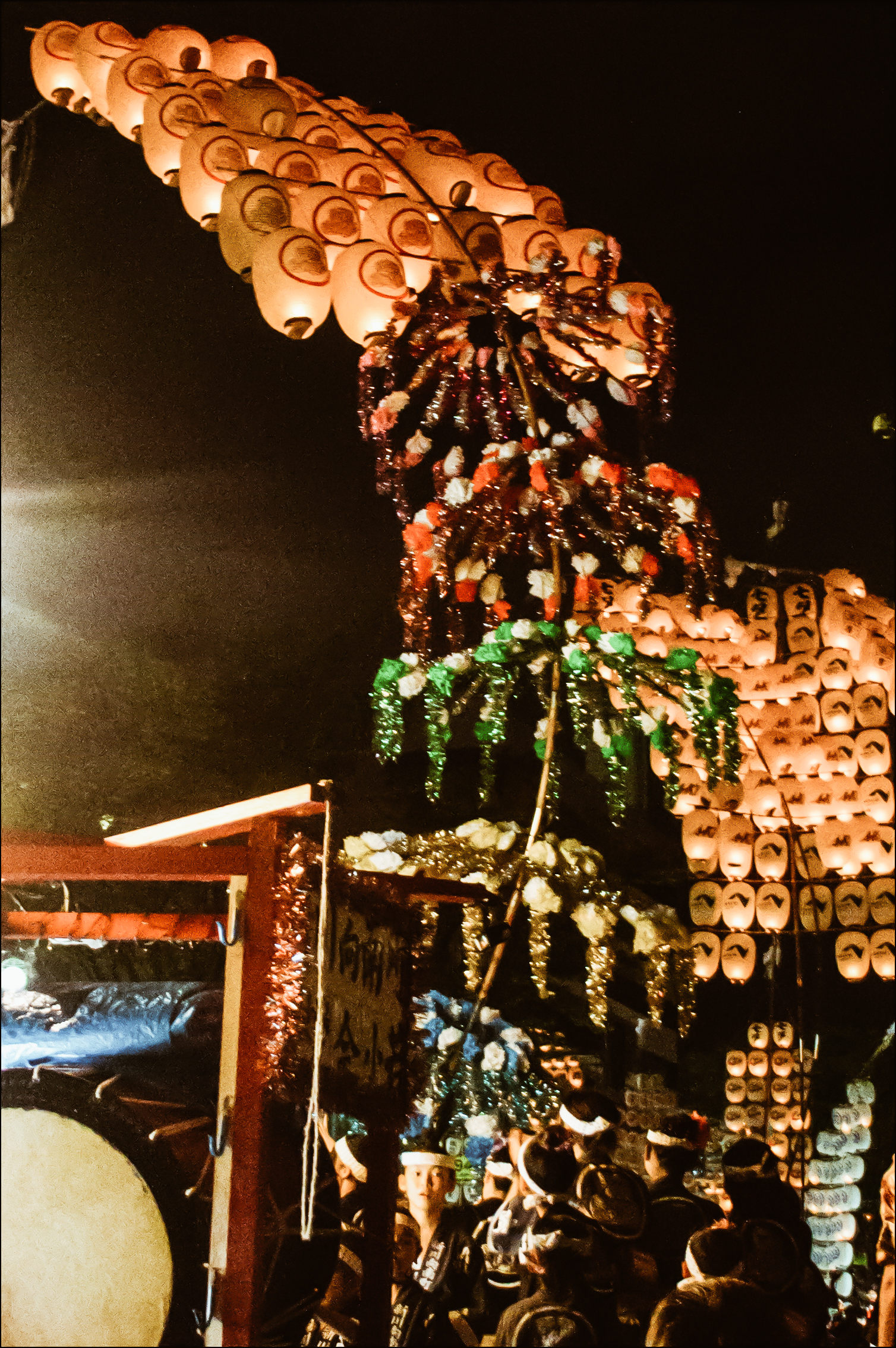

photo credits: Laura Tomàs Avellana, hitoyam
The origins
The festival originates from Neburi Nagashi, a celebration that was intended to free from illness and negativity during the summer. Already present during the Horeki period, in the middle of the Edo era, evidence can be found in various historical documents. One of these is “Yuki no huru michi” (written by Soan Tsumura in 1789). This is indeed the oldest documentation describing Neburi Nagashi, which says that the festival was held on 6 July according to the lunar calendar and it’s defined as the original Akita tradition.
During Neburi Nagashi, people decorated bamboo trees and plants with pieces of paper where they wrote their wishes. Later, the participants walked around the city with these plants along with candles and lanterns. Later, Neburi Nagashi took the name of Kanto.



photo credits: foxeight
The history of the Akita Kantō
The current name of the event was used for the first time by Tetsusaku Okubo in 1881. In this period, in fact, the emperor Meiji visited Akita. Here Okubo suggested entertaining the emperor with the Kanto performance.
Due to the change of the lunar-to-solar calendar in 1872 and given the smaller number of Kanto participating in the festival, the realization of the latter began to be uncertain.
However, in 1908 the emperor Taisho visited Akita and fell in love with the Kanto performance. The following year, a soft drink company printed its products’ names on the Kanto lanterns. These two events led to the restoration of the Kanto festival and its change of dates, to avoid the rainy season.
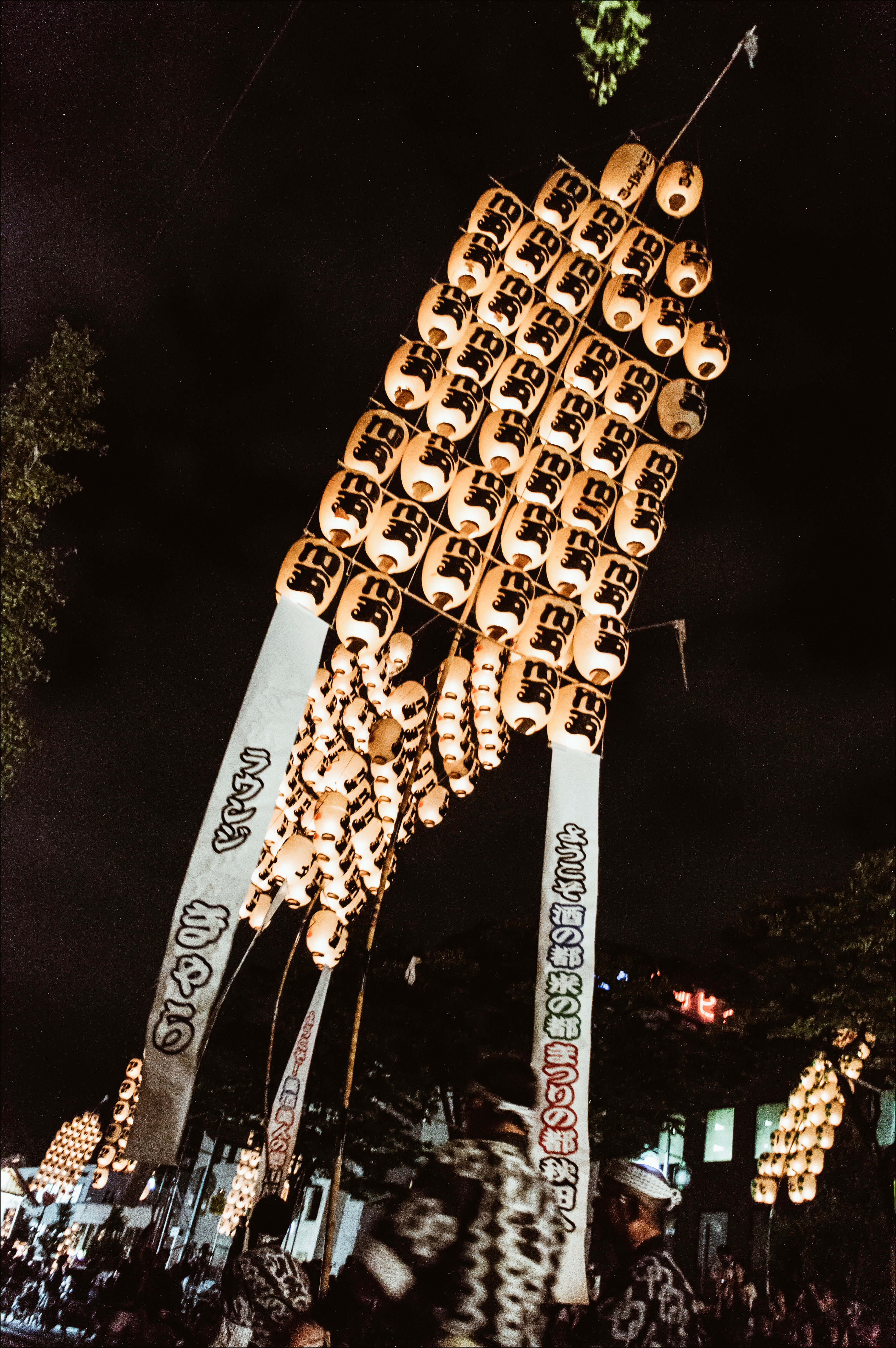
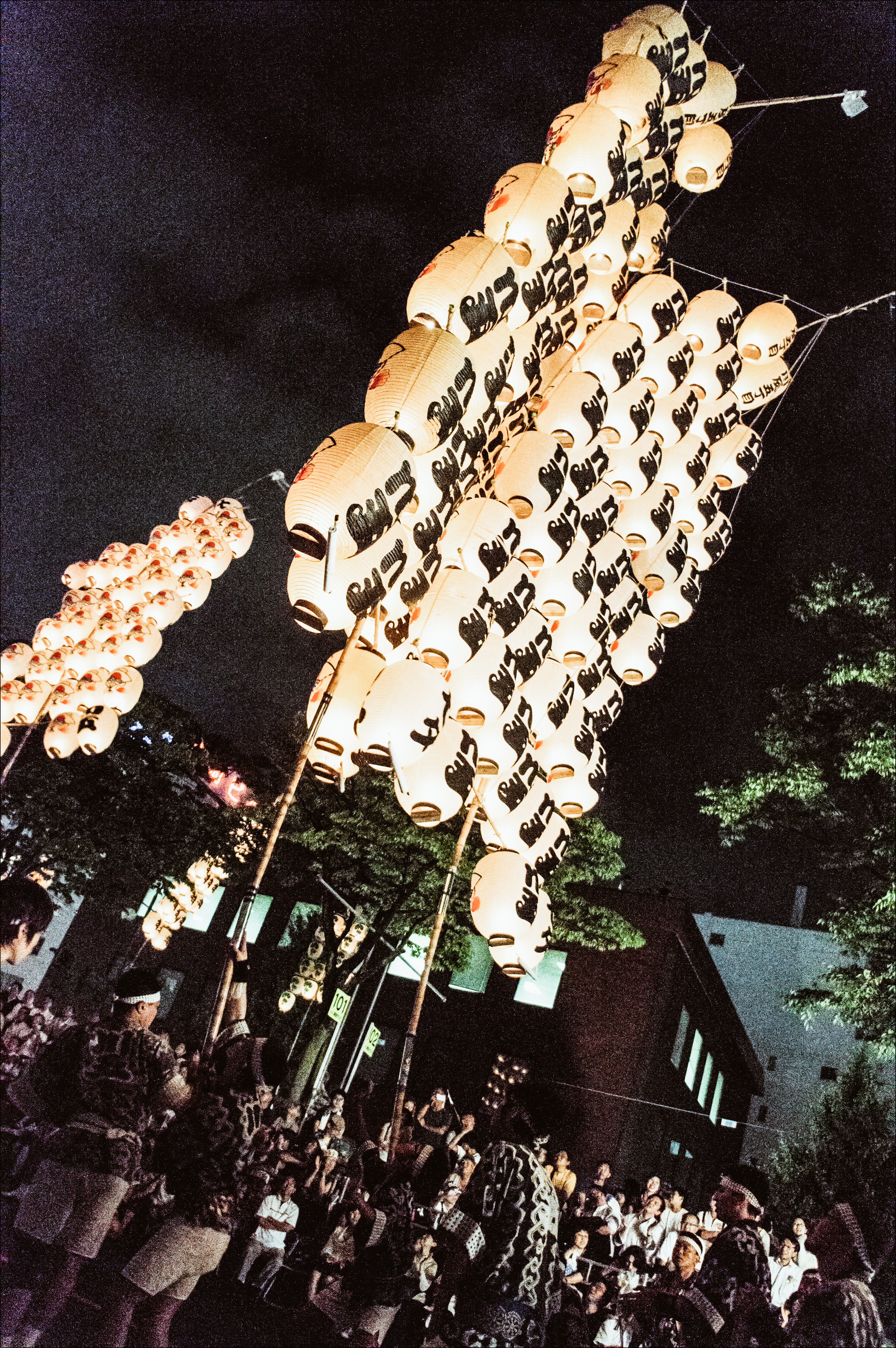
photo credits: Laura Tomàs Avellana
As a result, the number of visitors increased and the Kanto Society was established in 1931 was in charge of managing the festival.
Afterwards, the festival was canceled during the Second World War, and then after the end of the conflict, the Executive Committee of the Kanto Festival was created.
In 1976, after a successful performance in San Diego, USA, Kanto became popular in various countries.
Cos’è il Kantō
Literally, Kantō means “a pole with lanterns” and is made from bamboo poles and rice paper lanterns hung on horizontal bars.
The main bamboo pole is called “Oyatake” and they are of rather thick features and all produced in Japan. There are even very strict rules on the thickness and the spaces of junction from the root for these poles.
Therefore, people who choose the pole must be very demanding on the type of bamboo used to produce Kantō.

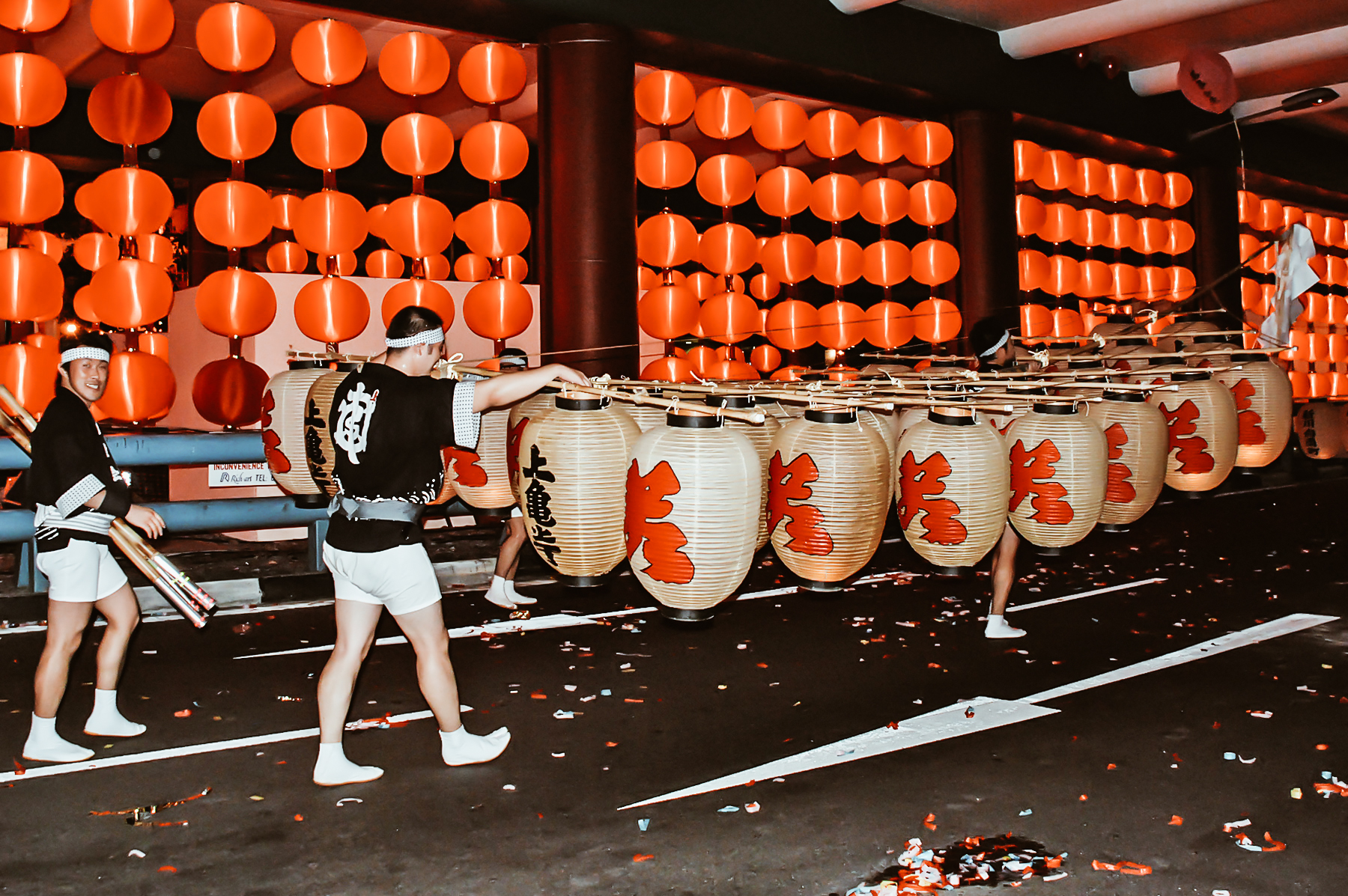
photo credits: Laura Tomàs Avellana, Choo Yut Shing
The horizontal branches are called “Yokotake” and it is here that lanterns are hung. The pieces of bamboo used to make the Oyatake even longer are called “Tsugidake”.
The Kantō are divided into four categories with regulated length: Oowaka, Chuwaka, Kowaka and Youkawa.
Kantō techniques
There are various techniques for using Kantō from the name “Myogi” and divided into 5 categories.
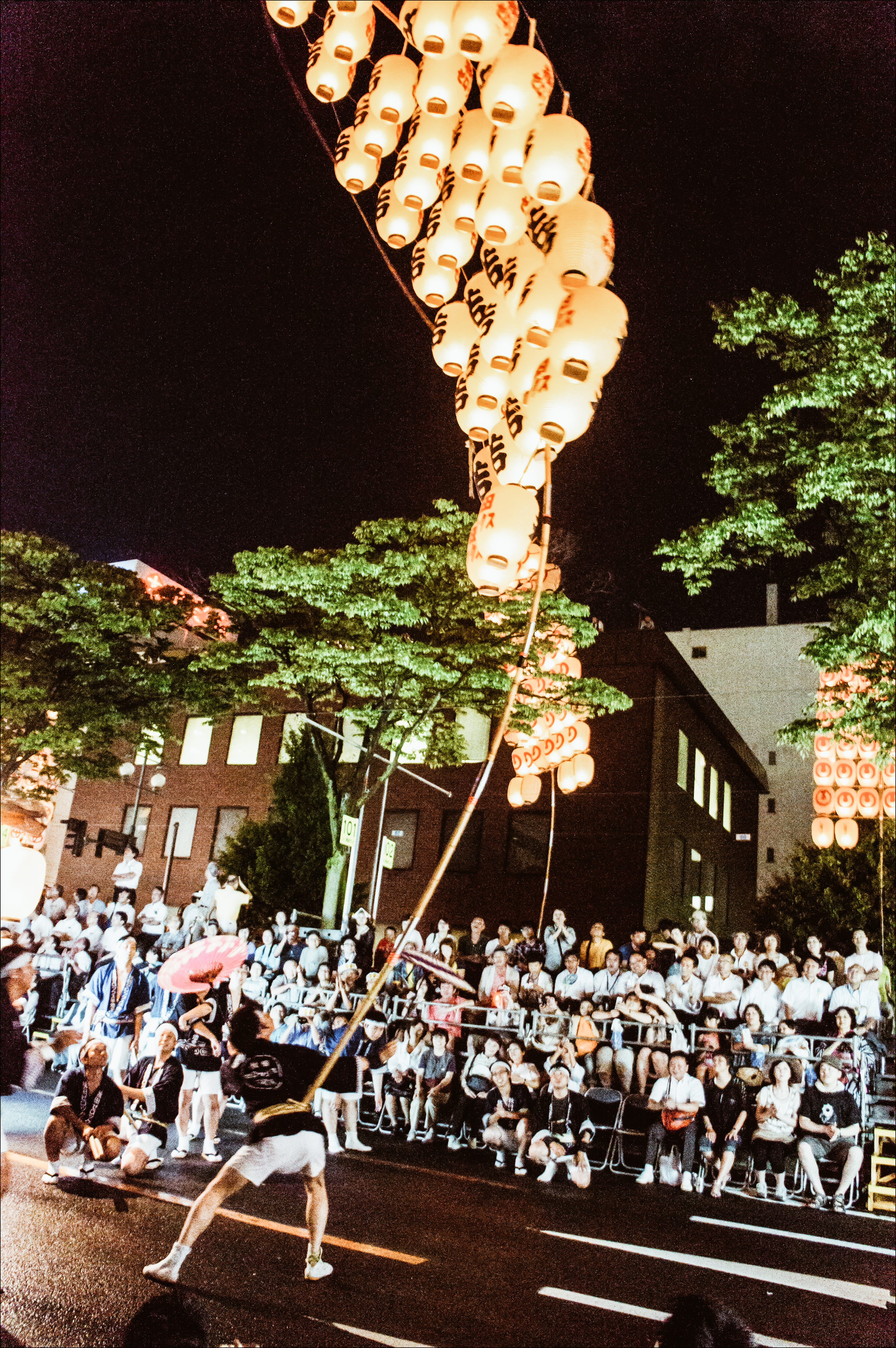

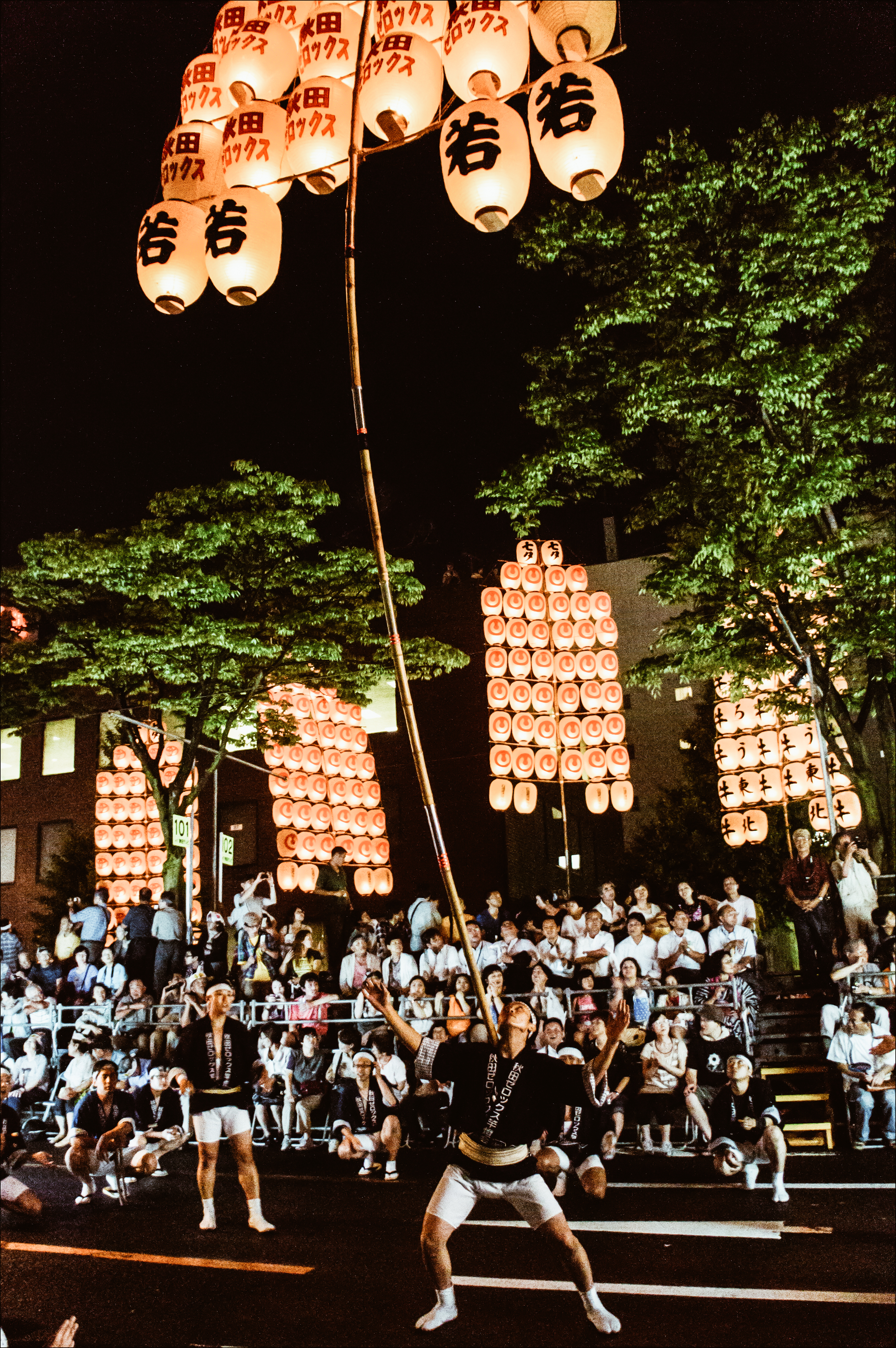
photo credits: Laura Tomàs Avellana
Nagashi
The artists hold the Kantō in the palm of their hands and balance it with their fingers. In this way, other artists can add Tsugitake
Hirate (hand)
The artists hold the Kantō still higher in the palm of his hand
Koshi (hips)
Kantō is held by the fingers. Later moved to the palm of the hand and then to the side. The artist bends sideways and balances with his own legs.
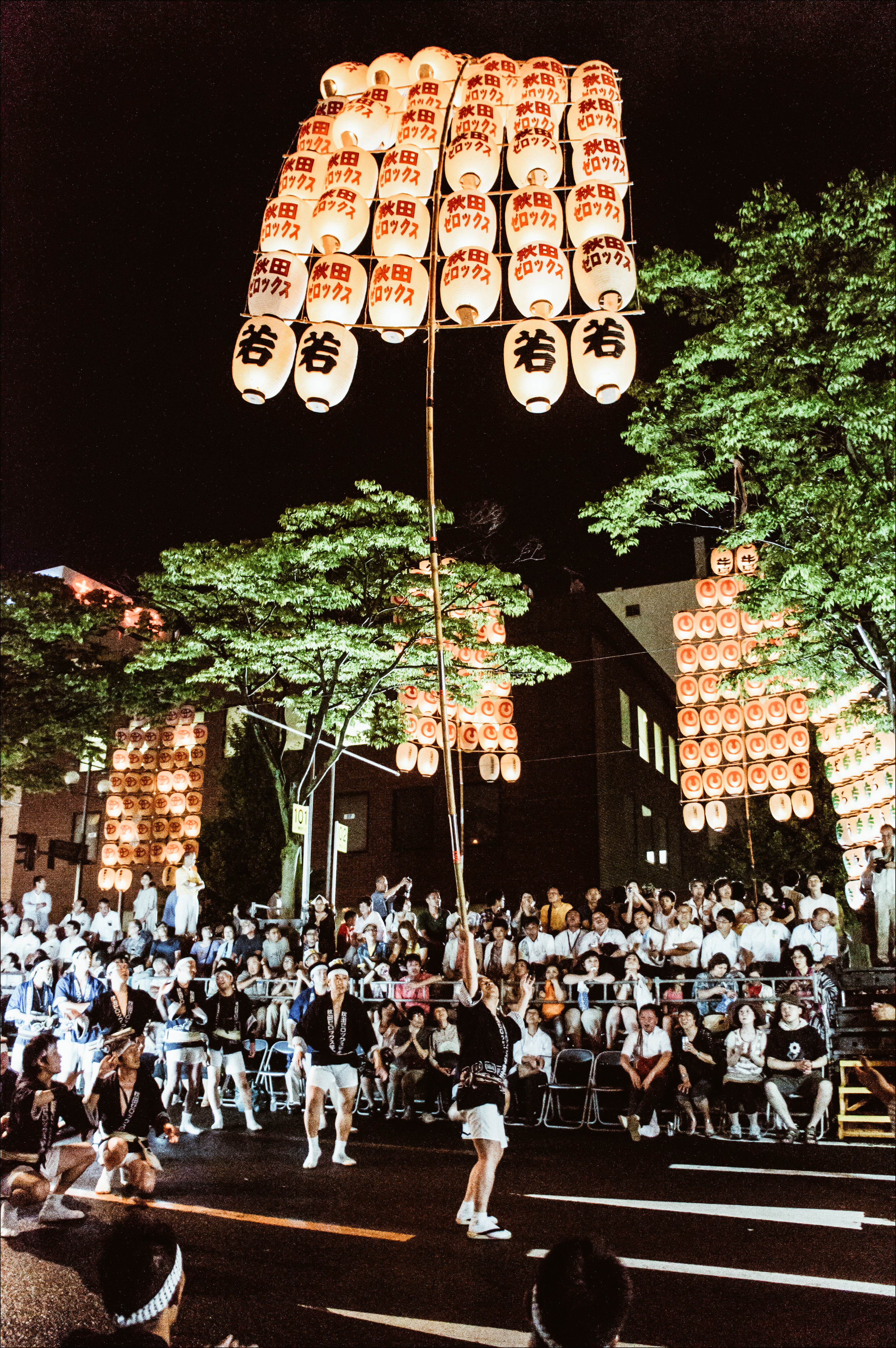
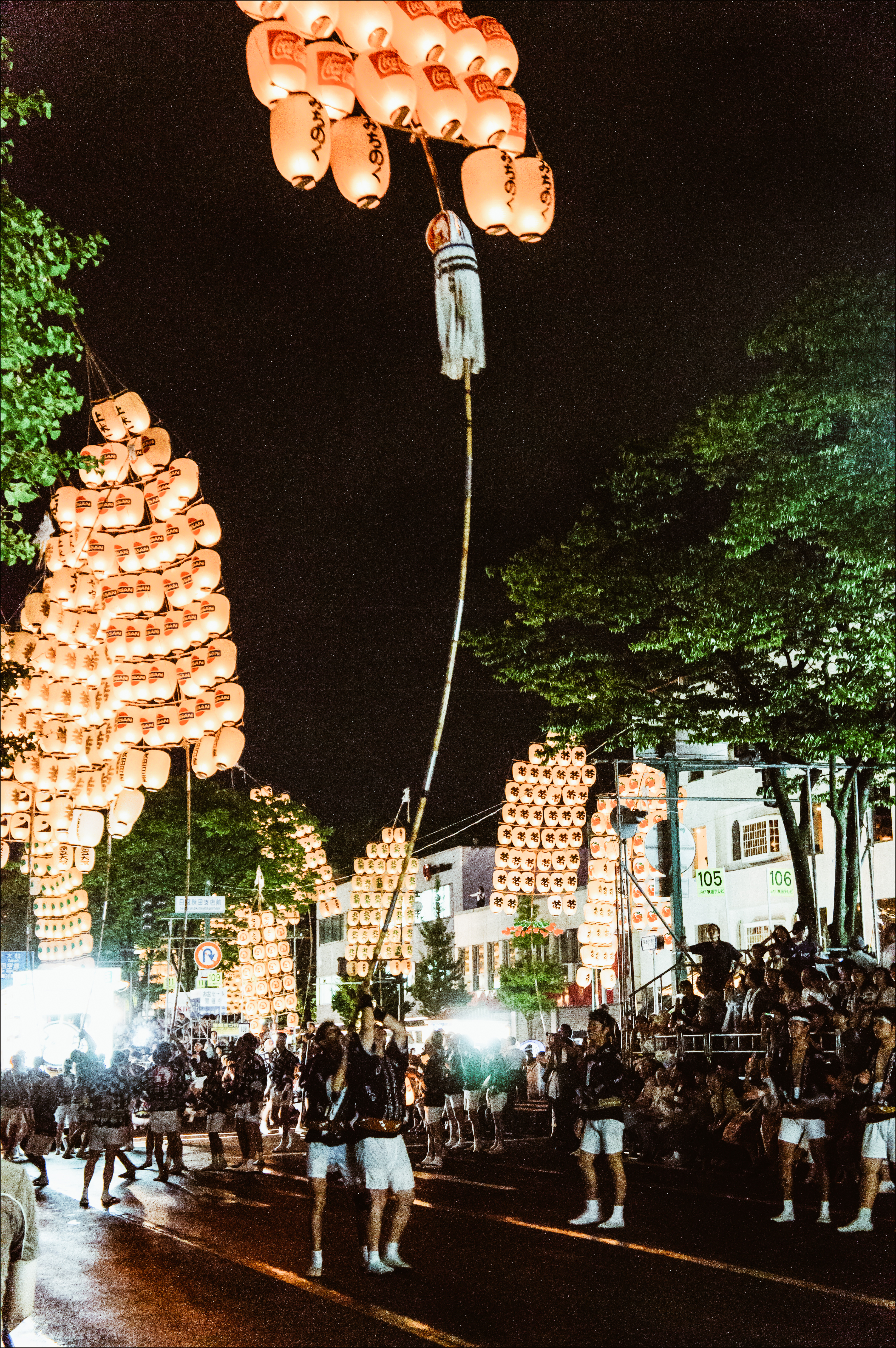

photo credits: Laura Tomàs Avellana
Kata (shoulder)
The artists hold the Kantō in the palm of their dominant hand and form a starting line from the leg to the Kantō, raising it even higher.
Hitai (forehead)
The artist holds the Kantō with his fingers and then moves it to the palm, then on the forehead.
During the day there are also competitions to test these skills, the Myogikai. The aim is not only to show their skills but also to study those of the other participants to learn new techniques.
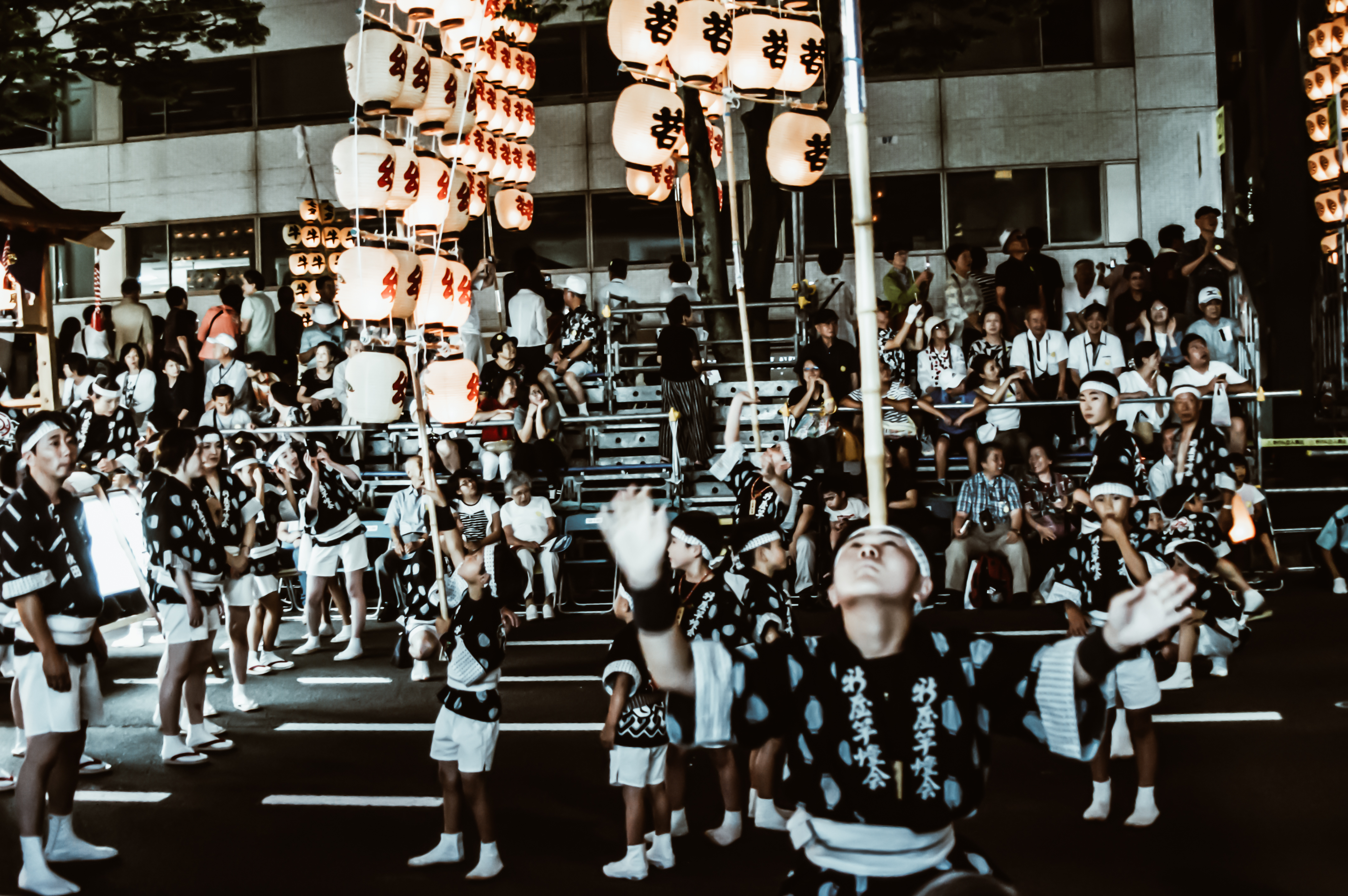

photo credits: foxeight
The Akita Kantō today
The date of the festival has been changed three times. It is currently held from 3 to 6 August each year.
The evening performance of the Akita Kantō is the main one and is held at the Kanto Oodori, one of the main streets of Akita. Here the purpose of the performers is not to compete with each other, but to entertain visitors by showing their skills and illuminating Kanto. More than 230 are raised at the same time to the sound of taiko music and flutes.


photo credits: foxeight
A unique experience of its kind that is worth living in full, as soon as you have the chance.
Share this:
- Click to share on Facebook (Opens in new window)
- Click to share on Twitter (Opens in new window)
- Click to share on Tumblr (Opens in new window)
- Click to share on Pinterest (Opens in new window)
- Click to share on Telegram (Opens in new window)
- Click to share on WhatsApp (Opens in new window)
- Click to share on Reddit (Opens in new window)
- Click to print (Opens in new window)






